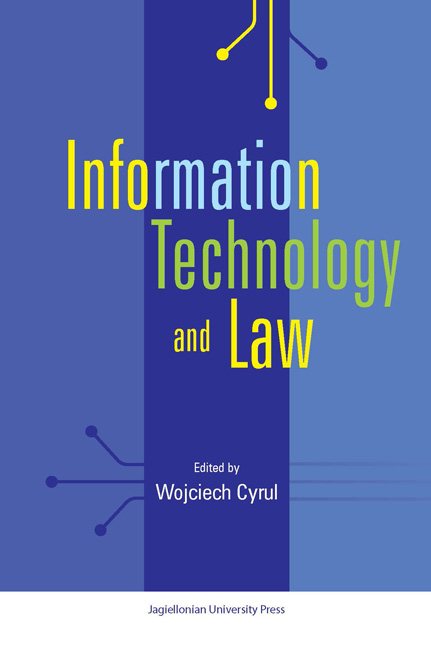Book contents
- Frontmatter
- CONTENTS
- Preface
- Chapter 1 Technological Destabilization of Law
- Chapter 2 Problems with the Storing and Presentation of Information
- Chapter 3 XML Models for Legal Documents: Current Polish Practices and International Standards
- Chapter 4 Similarity Analysis of Polish Legal Documents Using WordNets Semantic Relations
- Chapter 5 Consolidation of Legal Documents in an Electronic Format
- Chapter 6 A Three Dimensional – Code and a Question of the Normative Hyper-linking?
- Chapter 7 The Law, Labour Unions and Information Technology: Enhancing or Restricting Democracy at the Workplace
- Chapter 8 Protection of the Consumer in Digital Content Contracts
- Chapter 9 Procedure, Time and Imputation in Criminal Law
Chapter 3 - XML Models for Legal Documents: Current Polish Practices and International Standards
Published online by Cambridge University Press: 05 December 2014
- Frontmatter
- CONTENTS
- Preface
- Chapter 1 Technological Destabilization of Law
- Chapter 2 Problems with the Storing and Presentation of Information
- Chapter 3 XML Models for Legal Documents: Current Polish Practices and International Standards
- Chapter 4 Similarity Analysis of Polish Legal Documents Using WordNets Semantic Relations
- Chapter 5 Consolidation of Legal Documents in an Electronic Format
- Chapter 6 A Three Dimensional – Code and a Question of the Normative Hyper-linking?
- Chapter 7 The Law, Labour Unions and Information Technology: Enhancing or Restricting Democracy at the Workplace
- Chapter 8 Protection of the Consumer in Digital Content Contracts
- Chapter 9 Procedure, Time and Imputation in Criminal Law
Summary
1. Introduction
The legislative processes of legal acts and their promulgation have undoubtedly entered a new area, which is based on the electronic form of creation, storage and information sharing. In the European Union member states are obliged to share public information by Directive 2003/98/EC on the re-use of public sector information (with amendments enacted in 2013). Currently, all countries provide access to national law in the form of HTML pages or PDF files, whereas a widely adopted and accepted format for information exchange on the Internet is presently based on the XML language. The main disadvantage of the traditional approach is the lack of semantic information about the real structure of a legal act and its content which makes a more advanced search in legal texts hardly possible, let alone the application of some knowledge engineering tools. Legal documents are stored locally in national databases, recorded in accordance with the individual, national data structure, and this further complicates the reuse of such documents, especially in a multinational environment. The solution to the above problems is the application of XML language in national legislative processes and the development of a common transnational standard describing the structure of XML documents from national legal systems.
- Type
- Chapter
- Information
- Information Technology and Law , pp. 41 - 66Publisher: Jagiellonian University PressPrint publication year: 2014



